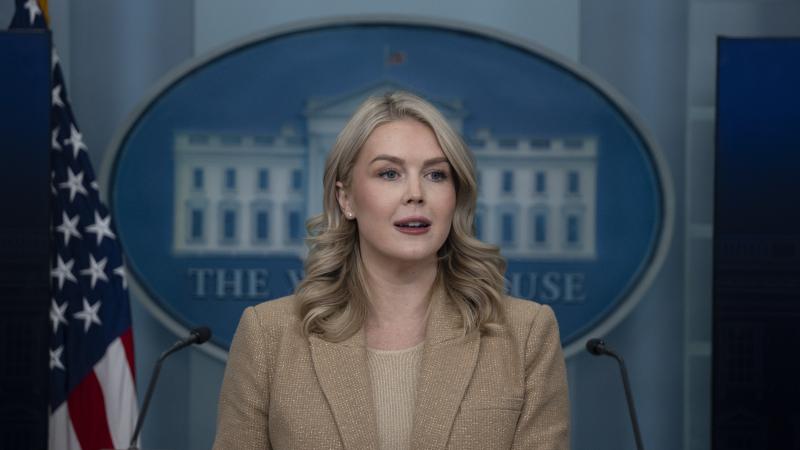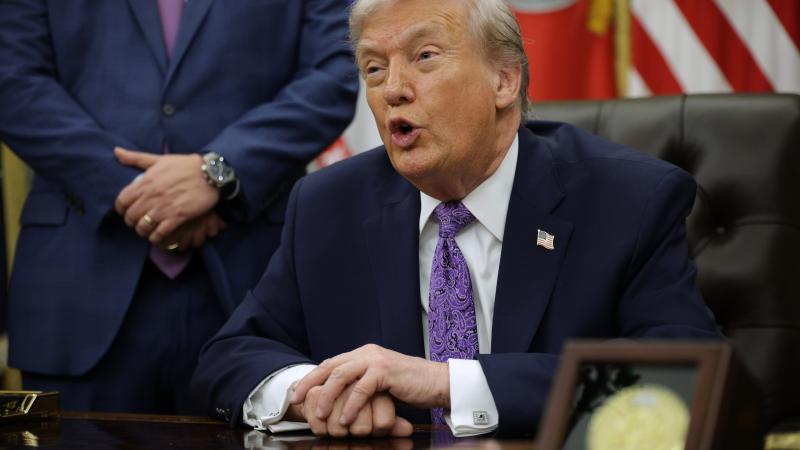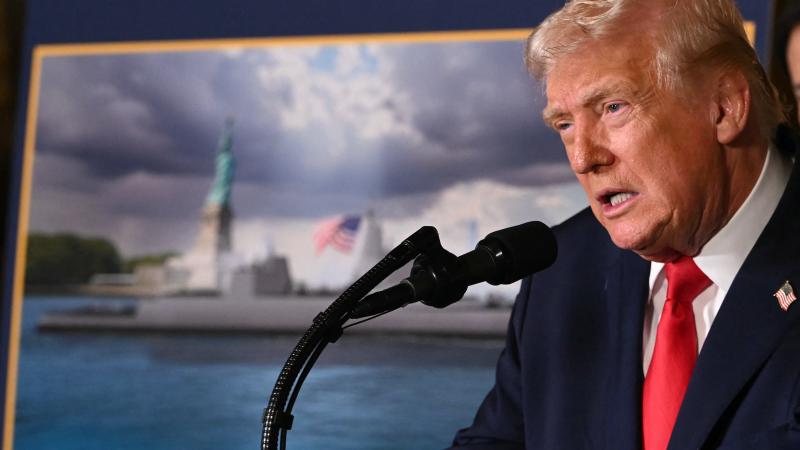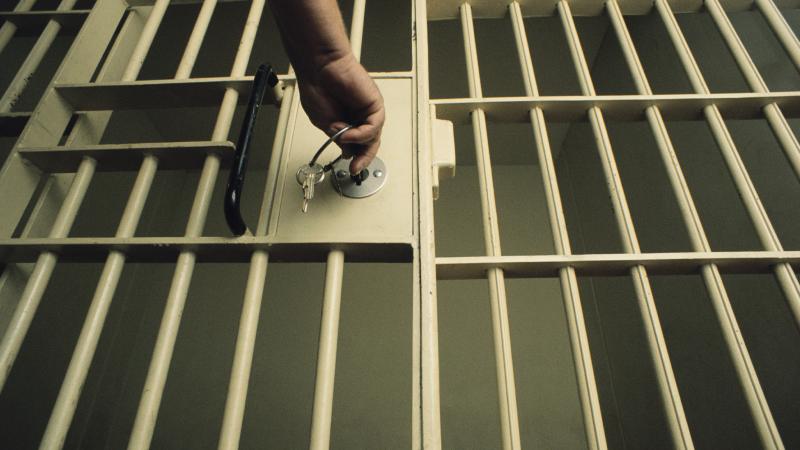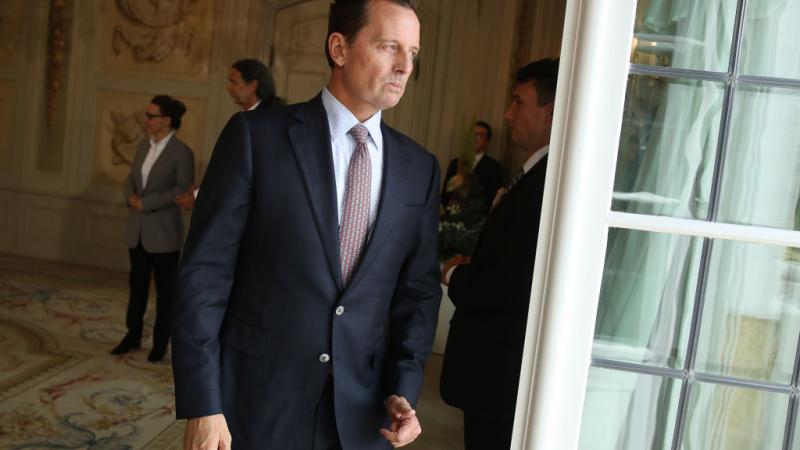Despite many renovations over two centuries, Democrats select Trump's WH additions for derision
Manufactured outrage: Clinton says Trump is "destroying" the White House. Construction on the new White House ballroom began in October and expanded space for visitors and guests — the public and heads of state for generations to come — will be available for events beginning in January 2029.
After new photos showed a White House East Wing building in the beginning stages of demolition, Democrats used the opportunity to criticize President Donald Trump, refraining to take into account the many past presidents who have demolished, replaced, renovated and altered various portions of the presidential property.
In May, Trump announced plans for a 90,000-square-foot State Ballroom in the White House’s East Wing, funded solely by private donors, including by Trump himself, at an estimated cost of $250 million. Designed to complement the property's neoclassical style, the ballroom will feature bulletproof glass walls and upgraded East Wing offices. The current largest space in the White House holds roughly 200 people in the East Room. The new ballroom will accommodate up to 999 guests, making it ideal for larger state visits and events, comparable to the UK's Buckingham Palace grand Ballroom and France's Élysée Palace Salle des Fêtes.
No indication Trump intends to rent out Lincoln Bedroom
Many opponents of Trump have voiced outrage over the required demolition of portions of the East Wing to make way for the new space. Former Secretary of State Hillary Clinton posted to her X account, "It's not his house. It's your house. And he's destroying it." Clinton famously returned roughly $28,000 worth of items improperly taken by the Clintons from the White House after her husband, former President Bill Clinton, left office.
The Center for Public Integrity (CFPI) reported in its 1996 report, “Fat Cat Hotel,” that major Clinton donors bought a night in the Lincoln Bedroom of the White House. The top donor to stay in the Lincoln Bedroom, according to CFPI, was billionaire and movie mogul Steven Spielberg, who donated $1,002,700 to various Clinton-related PACs.
The original White House was built from 1792 to 1800, designed by Irish architect James Hoban in a neoclassical style for President John Adams. It was set ablaze by British troops in 1814 during the War of 1812. What stands today is a reconstructed White House which was completed in 1817. Since then, many changes have been made.
History of remodeling White House wasn't controversial before Trump
In 1901, President Theodore Roosevelt commissioned the West Wing to meet the demand for more office space, as the White House could no longer support the growing administrative needs. Completed in 1902 under architect Charles Follen McKim, it introduced essential areas like the Cabinet Room and the president’s office, later known as the Oval Office.
In 1909, President William Howard Taft enlarged the West Wing, incorporating the first official Oval Office as a dedicated presidential workspace. Designed by architect Nathan C. Wyeth, the iconic oval-shaped room was crafted to boost both the functionality and prominence of the president’s office in the White House.
Two major changes to the White House took place under President Franklin D. Roosevelt. FDR added a second floor to the West Wing in 1934, expanding office space for staff and creating the modern Oval Office layout. Additionally, he relocated the Oval Office from its original central position in the West Wing to its current southeast corner location, improving privacy and accessibility. These renovations modernized the White House, adapting it to the growing needs of the executive branch.
The most significant modification to the current White House came under President Harry Truman. From 1948 to 1952, the interior was completely gutted, and a new steel frame was constructed to modernize and reinforce the building while preserving its historic exterior. Truman and his family lived at Blair House during the extensive reconstruction, which fortified the White House's safety and functionality for future administrations.
Remodeling during Camelot Years of the White House lauded
According to the JFK Library, for First Lady Jacqueline Kennedy, who remodeled the White House in 1960, "The first principle focused on the evolving nature of the White House and the importance of not limiting the style to one time period. The second principle dealt with the 'living' character of the White House and the need to reflect the different administrations that had passed through. The third principle focused on the library as an integral part of the White House's symbolic and functional role. Inspired by these suggestions, Mrs. Kennedy decided to focus on the evolving character of the White House, rather than its earliest period, for restoration."
Under President Kennedy, "Congress sanctioned the restoration of the White House with Public Law 87-286, which officially declared the White House a museum. This act allowed the Fine Arts Committee and the curator's office to assure potential donors that their gifts would not be auctioned off or kept in the private collection of any president. It further protected the rooms of the White House from being radically altered in the future and clearly defined the project as historic preservation, rather than mere redecoration," the library says.
Mrs. Kennedy's White House restoration received lavish attention from the media, prompting offers from across the United States from people who wished to donate family heirlooms. Media coverage of the event culminated in Mrs. Kennedy's guided tour of the White House on CBS, which aired on February 14, 1962. The show drew more than 80 million viewers and embellished the Kennedy's reputation as cultural gurus. Mrs. Kennedy was also awarded an honorary Emmy for her contribution to television.
Other changes
1970 brought the end of lap-swimming for the First Family. President Richard Nixon ordered the White House indoor swimming pool, built under FDR, to be covered over in 1970 to create a press briefing room now known as the James S. Brady Press Briefing Room. This decision was made to accommodate the growing needs of the press corps, prioritizing media space over recreational facilities.
In 2009, Obama demolished the White House tennis courts and replaced them with a full basketball court, which is now the Tennis Pavilion, constructed in 2020 during Trump's first term.
Trump's trade: Singular among presidents as a builder
Teddy Roosevelt, by trade, was an author, historian, and public servant. He wrote books like The Naval War of 1812, served as a New York State assemblyman, rancher in the Dakota Territory, New York City Police Commissioner, Assistant Secretary of the Navy, and Governor of New York.
Taft was a lawyer and judge. He practiced law, served as a prosecutor, Ohio Superior Court judge, U.S. Solicitor General, and federal circuit court judge, later becoming Governor-General of the Philippines and Secretary of War.
FDR was a lawyer and public servant. He practiced corporate law in New York, served as a New York State Senator, and was Assistant Secretary of the Navy before becoming Governor of New York.
Truman was a businessman and public servant. He ran a haberdashery (men’s clothing store) in Kansas City, worked as a farmer, and served as a county judge and U.S. Senator from Missouri.
JFK graduated from Harvard with a degree in government, and although he planned to attend law school, he enlisted in the Navy instead, and served famously during WWII.
Nixon was a corporate lawyer and public servant. He practiced law in California, served in the U.S. Navy during WWII, and was a U.S. Representative and Senator from California, later becoming Vice President under Eisenhower.
Trump is a builder. Of the notable alterations to the White House and the presidents who oversaw the changes, Trump stands out as the only president who has a background in construction.
The Facts Inside Our Reporter's Notebook
Links
- new photos showed
- Trump announced plans
- Buckingham Palace grand Ballroom
- Salle des Fêtes
- returned roughly $28,000 worth of items
- The Center for Public Integrity
- Fat Cat Hotel
- set ablaze by British troops
- commissioned the West Wing
- enlarged the West Wing
- added a second floor
- relocated the Oval Office
- completely gutted
- According to the JFK Library
- remodeled
- aired on February 14, 1962.
- covered over in 1970
- White House tennis courts
- Teddy Roosevelt
- Taft
- FDR
- Truman
- Nixon
